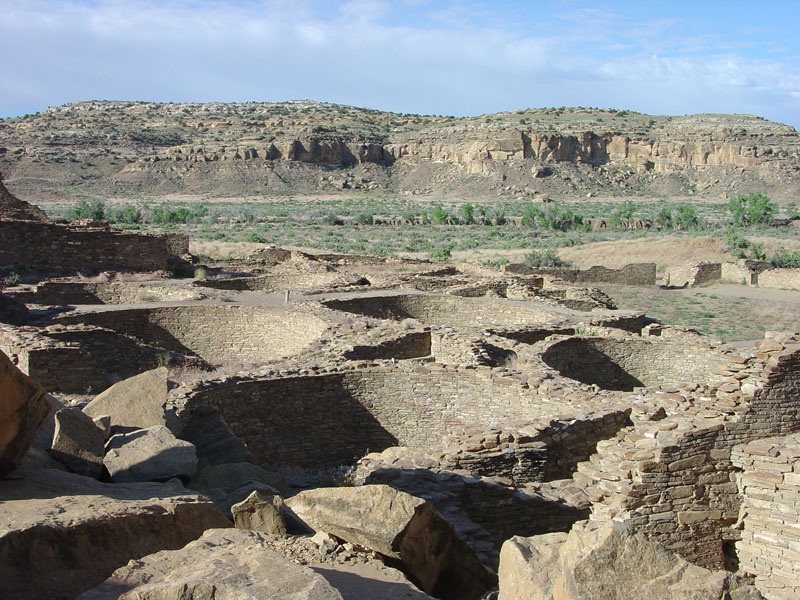| The size and number of the kivas surrounding the plaza at Pueblo Bonito. By 1050 A.D. Chaco had become the economic, administrative, and ceremonial center of the San Juan Basin (NPS, 2008). Archeological evidence shows that items (sea shells, copper, and feathers) were traded from distant sources in Mexico and turquoise from near Santa Fe, New Mexico (Lekson, 2010). Current thought is that the great houses were used primarily for family and clan gatherings and ceremonies, commerce, storage, and trade, but were not traditional farming villages occupied by a large population (NPS, 2008). However, by 1150 A.D. Chaco Canyon's surviving populations appear to have migrated elsewhere. Their descendants are part the modern Puebloan cultures that exist in the region today (Stuart, 2000; Lekson and others, 2005). |

